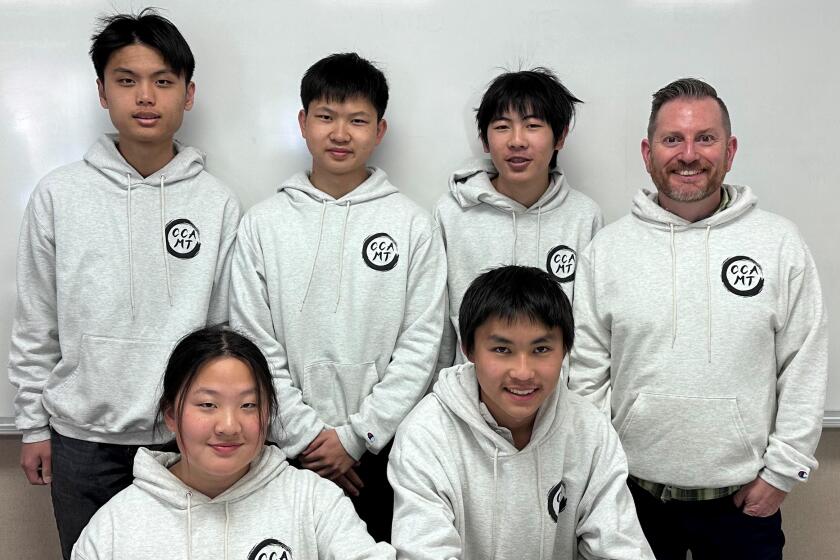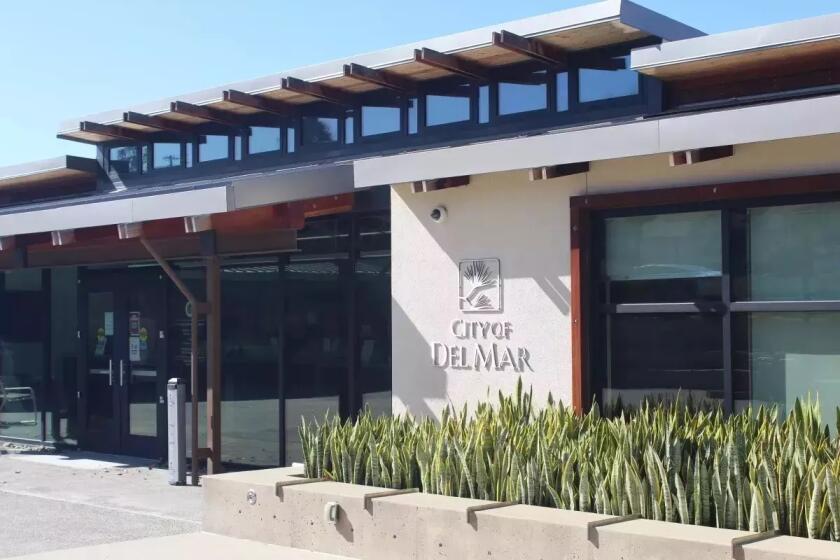Billionaire Patrick Soon-Shiong reaches deal to buy San Diego Union-Tribune, L.A. Times
Biotech billionaire Patrick Soon-Shiong has agreed to purchase The San Diego Union-Tribune and the Los Angeles Times from its parent company. (The purchase of The San Diego Union-Tribune includes this newspaper, which is part of U-T Community Press.)
Chicago-based Tronc on Wednesday, Feb. 7, announced the sale of the Union-Tribune, The Times and the Spanish-language Hoy to Soon-Shiong’s investment firm, Nant Capital, for nearly $500 million in cash.
“It is often said that Southern California is the place where the world comes to see its future. It has welcomed generations of immigrants who worked hard, started new businesses and helped others do the same,” Soon-Shiong said in a note Wednesday to the papers’ staffs. “My own family immigrated from southern China to South Africa generations ago. We chose to settle in Los Angeles because this is the place that most felt like home.
“Ultimately, this decision is deeply personal for me. As someone who grew up in apartheid South Africa, I understand the role that journalism needs to play in a free society,” Soon-Shiong said.
Soon-Shiong, 65, invested in Tronc in spring 2016 to help the company fight a takeover bid from USA Today owner Gannett. That positioned him as the company’s second-largest shareholder, but soon led to friction with Tronc Chairman Michael Ferro as the two men became rivals for control of the company.
The sale to Soon-Shiong came together quickly, over the last few days, and startled many observers. Tronc had fended off previous efforts to buy the company outright or peel off the California newspapers. It had insisted that The Times was key to its strategy of building a global entertainment brand — given its proximity to Hollywood, technology hubs and the Pacific Rim.
But, amid a barrage of negative publicity in Los Angeles, Ferro began to reassess his company’s strategy.
He came up with a number — $500 million — and decided that if he could fetch that price for The Times and the Union-Tribune, then it was the right time to sell.
It’s unclear whether he or Soon-Shiong made the first overture this time around, but talks began less than a week ago and reached a fever pitch over the weekend. That’s when the contours of a deal came together.
“This was a fairly efficient process,” said Dennis Culloton, spokesman for Ferro. He noted that Ferro’s change of heart came after the Chicago investor stepped back and assessed “the big picture.”
“Michael’s career leading public companies has been marked by one thing — increasing value for shareholders,” Culloton said. “And when there was an opportunity to get this kind of a price, he determined that it was a great opportunity to bring enormous value to shareholders and the company.”
Tronc’s stock price leaped after the deal was announced, closing up 19 percent at $21.55.
By agreeing to the $500 million price tag, Soon-Shiong is paying a significant premium. The purchase price plus the assumption of $90 million in pension liabilities nearly equal the market capitalization of the entire Tronc chain, which stood at $608 million Tuesday.
With plummeting print advertising revenue, traditional publications have fallen out of favor on Wall Street. For example, Tronc’s print revenue plummeted 17 percent in the first nine months of 2017.
But major newspapers have found several billionaire benefactors willing to throw them a lifeline. Amazon founder Jeff Bezos bought The Washington Post in 2013. That same year, Red Sox owner John Henry scooped up The Boston Globe and, in 2014, Minnesota billionaire and Timberwolves owner Glen Taylor bought the Minneapolis Star-Tribune.
As a local who already owns a minority stake in the Los Angeles Lakers, Soon-Shiong probably will face high expectations — both from the Times’ newsroom and the Southern California community.
Now Tronc will have a pile of cash as it retools its strategy — without its biggest source of content.
“We will have a versatile balance sheet that will enable us to be even more aggressive in executing on our growth strategy as a leading player in news and digital media,” Justin Dearborn, chief executive of Tronc, said in a statement.
The company said it will form a new division called Tribune Interactive, which will be led by former Los Angeles Times Publisher Ross Levinsohn. Levinsohn, who had been placed on unpaid leave Jan. 19 amid revelations that he was a defendant in two sexual harassment lawsuits, resigned from his position at The Times on Wednesday.
It is also expected to use the $500 million in proceeds to pay down debt, make acquisitions and further its digital strategy across the remaining papers, which include the Chicago Tribune, Orlando Sentinel, Baltimore Sun and the New York Daily News.
Dearborn said Chris Argentieri will resume his role as general manager of the California News Group and work with Soon-Shiong during the transition. Other key executives also will continue in their current roles: Jeff Light as publisher and editor of the Union-Tribune and Jim Kirk as editor in chief of The Times.
Though the purchase would mean a change of ownership for The Times and Union-Tribune, the papers will continue to collaborate with Tronc under a 12-month agreement to share corporate services such as payroll and human resources.
Media analyst Ken Doctor speculated that Tronc, as it seeks to build its own national online news network, may want to syndicate Times content, including its entertainment coverage.
“Ferro wanted to commercialize Los Angeles Times content, and I’d be surprised if he didn’t keep the ability to do that in the contract,” Doctor said. “They can get a steady stream of content without owning the asset.”
Doctor acknowledges that while there are still a lot of unknowns surrounding the deal, it made sense to package the two properties together.
“The U-T is valuable, San Diego is a very good market and it’s a lot less competitive than L.A.,” said Doctor. “The operations have already been somewhat integrated so there are operational savings. I believe that Tronc would not have wanted to own the Union-Tribune alone if it was selling The Times, so it was essentially selling the California News Group.”
Soon-Shiong does not have a background in publishing or journalism, so it remains an open question as to how he will manage the two Southern California properties, noted Doctor. With a fortune estimated by Forbes at close to $7.8 billion, Soon-Shiong has the financial wherewithal to reinvest in both The Times and the U-T but it’s unclear whether he will, he added.
“It doesn’t seem like cutting would be likely but the truth is nobody knows,” Doctor said. “Given his financial capacity, there should be no short-term stress on these businesses. Understanding that reader revenues are the most important revenue, it would make sense to reinvest both in the content and in the digital product because it is that combination of unique content that is well delivered that encourages people to buy digital subscriptions.”
While increased investments may seem more obvious for the Los Angeles Times, Doctor says it is “equally true for a good-sized metro paper like the U-T.”
Soon-Shiong would be the U-T’s fifth owner in the past decade.
The Union-Tribune, which is marking its 150th anniversary this year, was owned by the Copley family until it was sold to Platinum Equity in 2009, then to Douglas F. Manchester in 2012 and to Tribune Publishing, which later became Tronc, in 2015.
Light, the publisher and editor of the U-T, called the Soon-Shiong deal “a terrific outcome.”
“I see opportunity for us on the business side and, more importantly, in our journalism,” he said.
— Meg James writes for the Los Angeles Times, and Roger Showley and Lori Weisberg write for The San Diego Union-Tribune.
Get the Del Mar Times in your inbox
Top stories from Carmel Valley, Del Mar and Solana Beach every Friday for free.
You may occasionally receive promotional content from the Del Mar Times.





